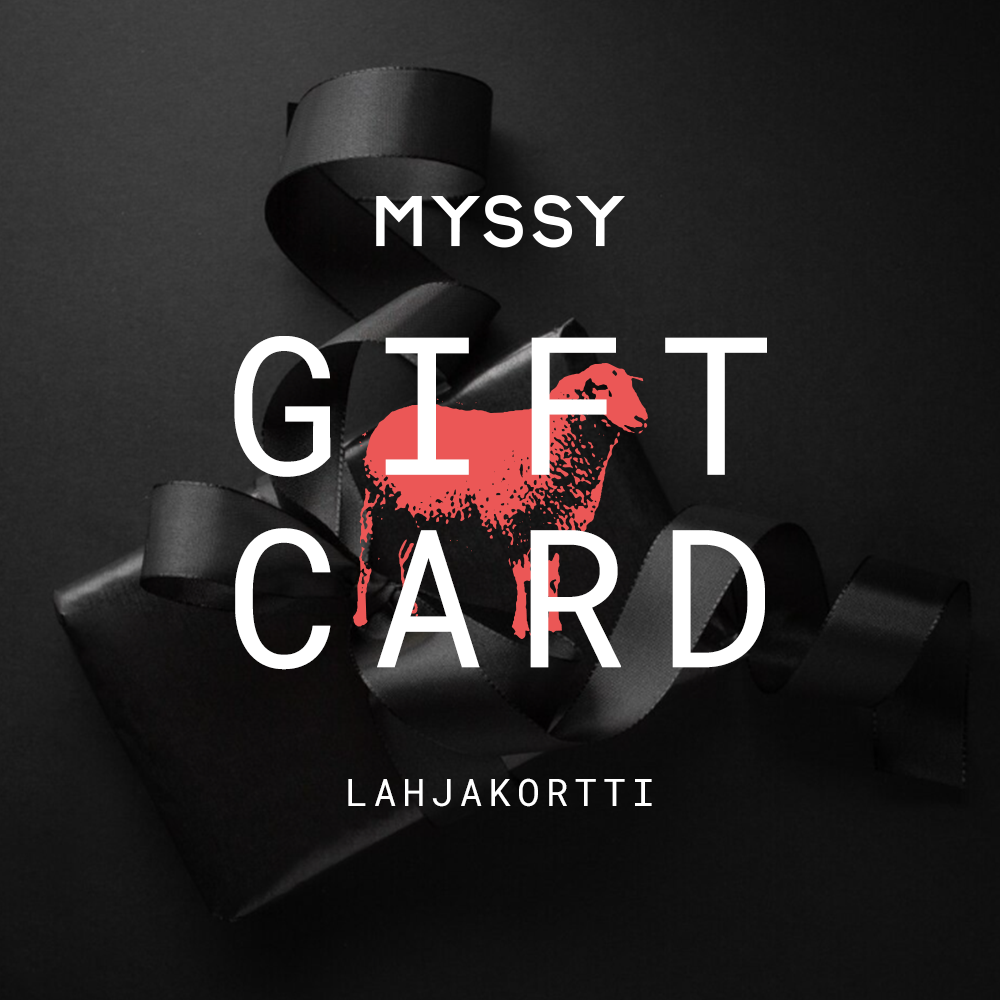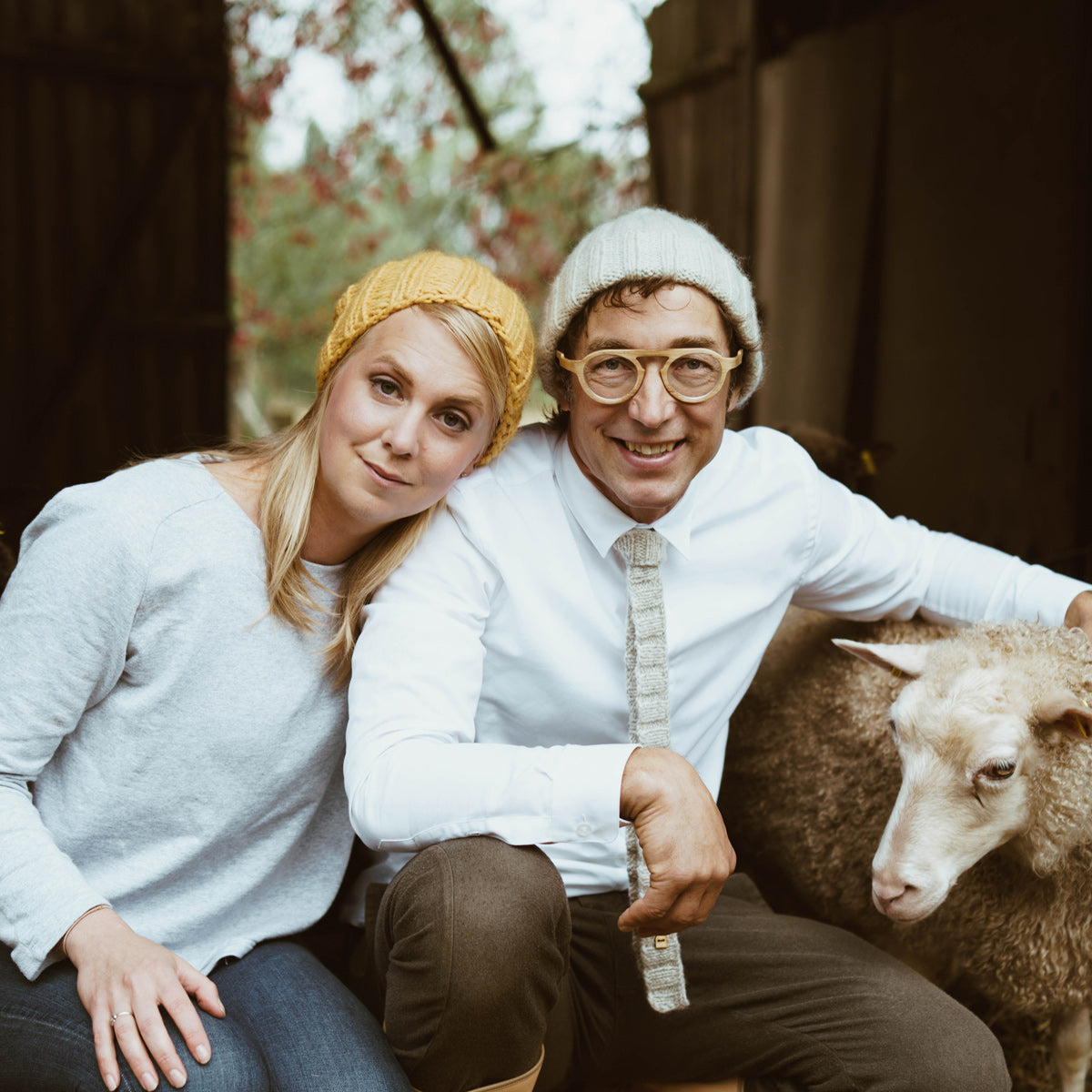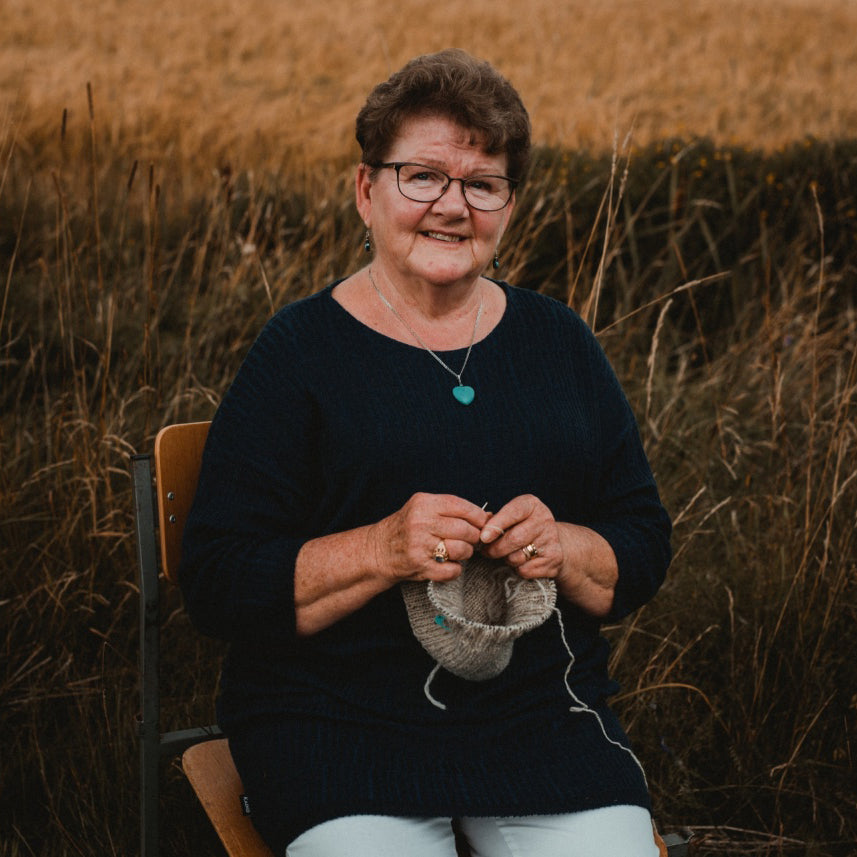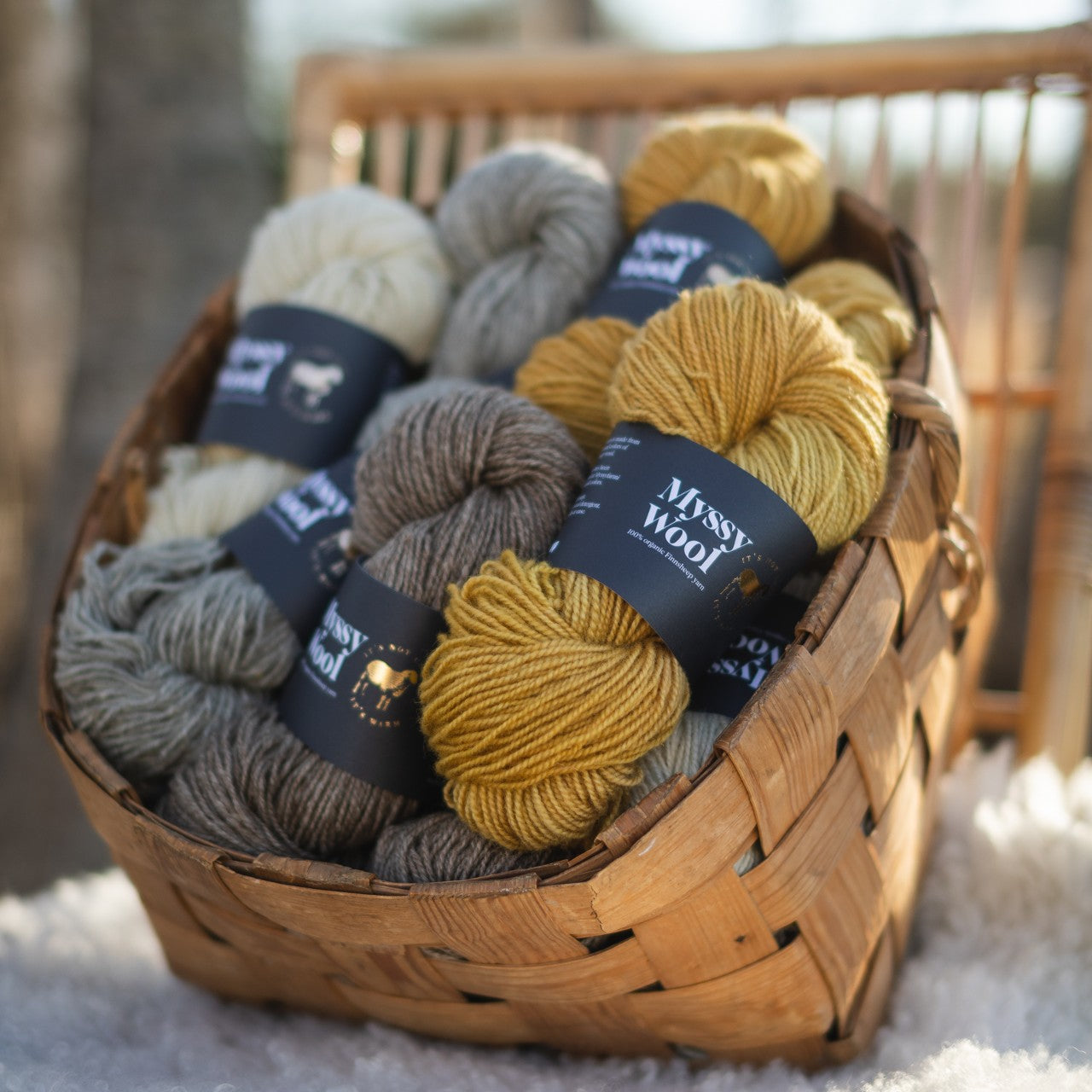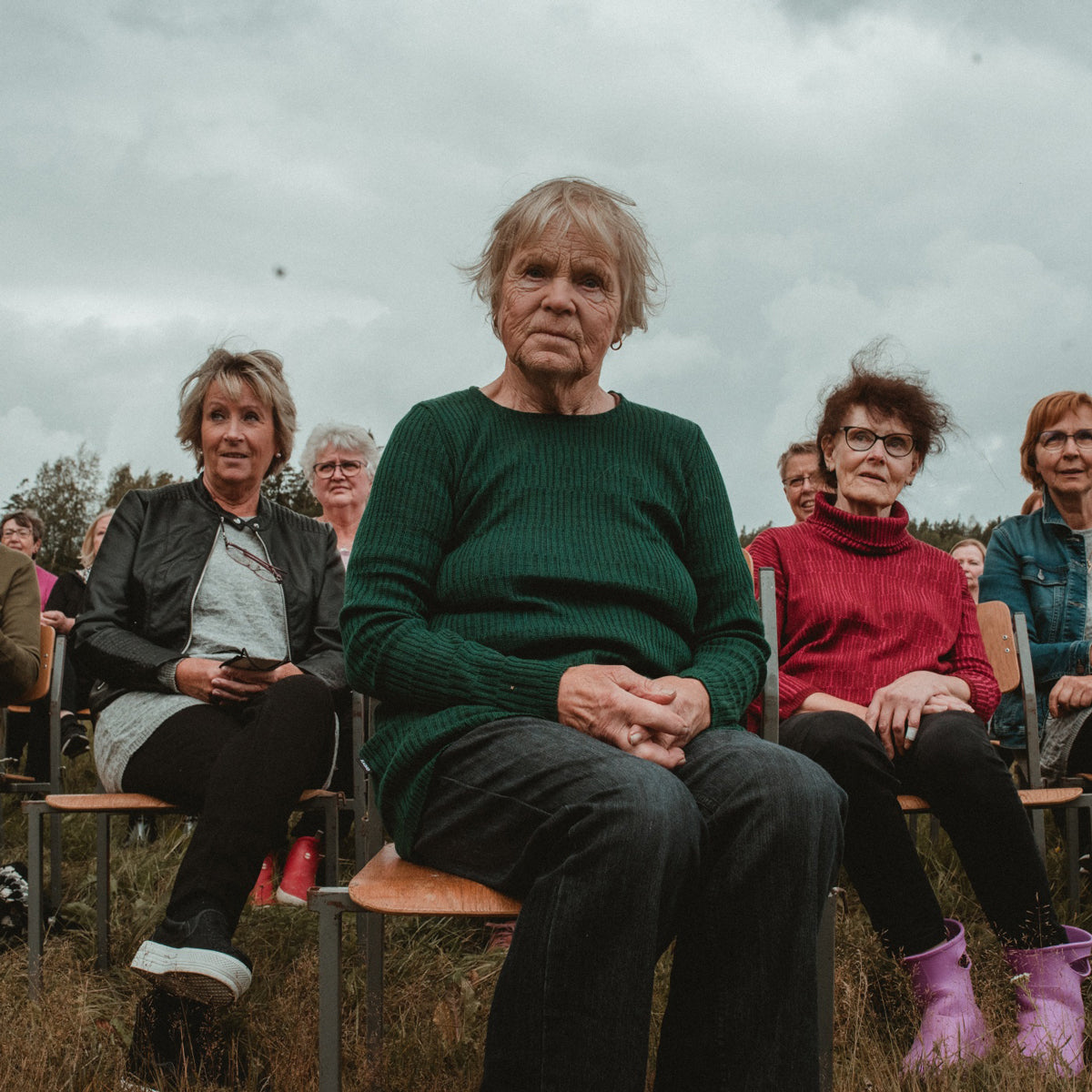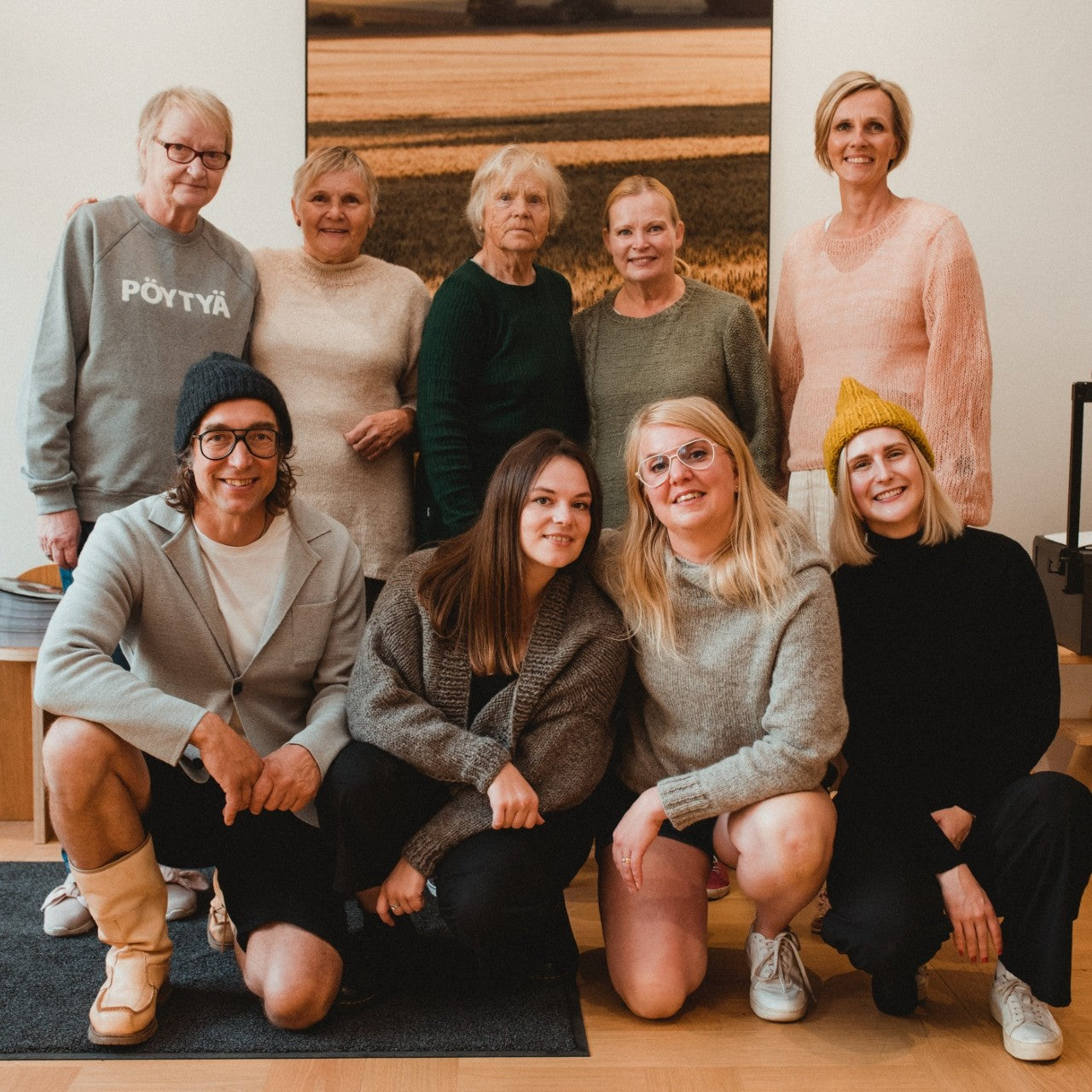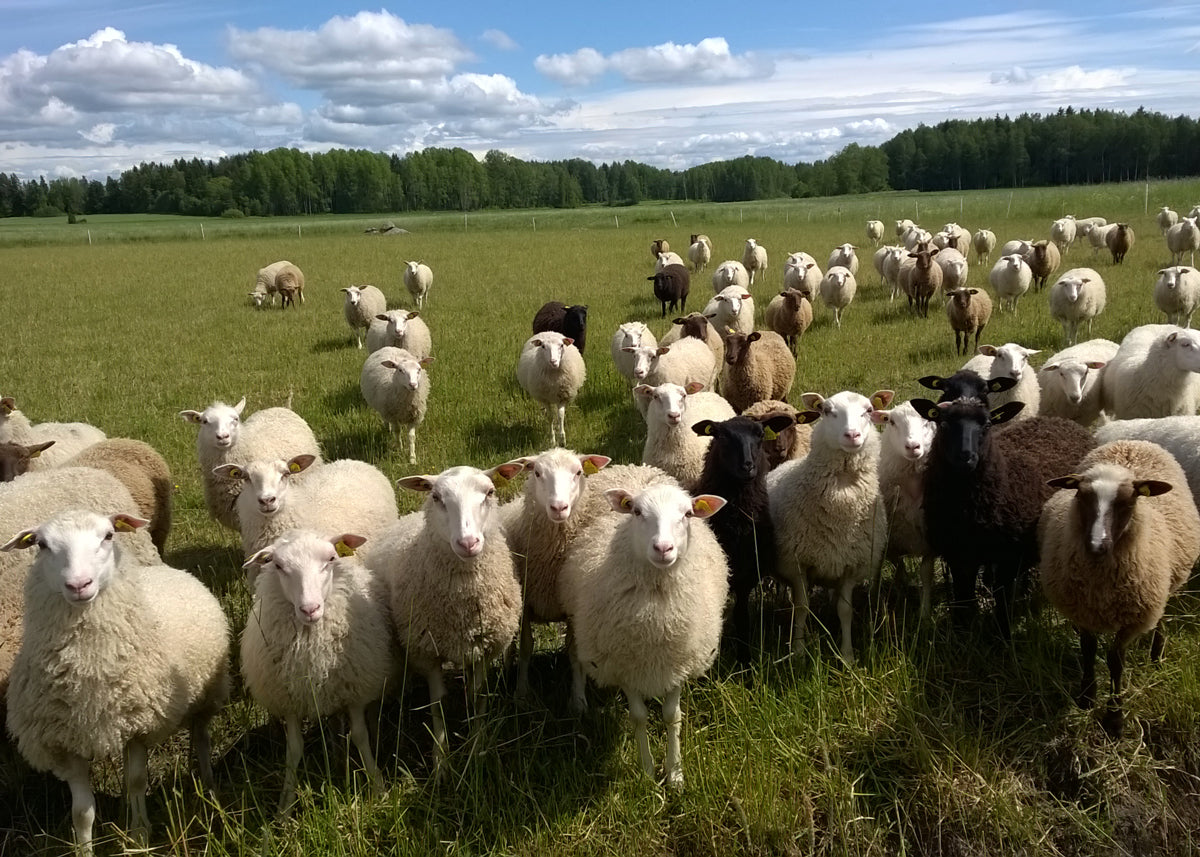In our blog series, we'll be presenting the producers of Myssy wool and the people behind the sheep farms.
Introduce yourself and your farm to us!
I am Jarmo Latvanen from the sheep farm of Tolvila. Our farm is an organic sheep farm and we race an original land race called the Finnsheep.
When and why did you become a sheep farmer?
Our first own sheep came to the farm in 2007. Before that our neighbor’s small sheep herd was been grazing a traditional biotopes here. I fell in love with Finnsheep, because they are such diverse and wonderful animals. That’s when we really got into sheep farming.
This original landrace has something primitive in them, it's a breed with a long history. There has been settlements on our farm area for about 7,000 years, and for that reason it made sense to choose a breed with such long history.

What else do you do on your farm?
Besides breeding Finnsheep we also do organic farming and graze the grass with traditional biotopes.
Describe your typical day during this time of the year?
It’s autumn now, and our sheep are still in the pasture for a while. We are just about to start sheering, during which the sheep are brought to the sheep barn, but they still get back to the pastures, as the weather is still quite favorable for grazing.
The mating groups have just been formed, which is keeping the rams busy, so that we can have lambkins born in February. The animals are inspected every day on pastures. We currently have animals on eight different pastures.
Currently, you are also preparing for the indoor feeding season. The falllambkins will be born in few weeks, se we are getting ready for that as well.
Besides that we are busy keeping our farm shop open, that's where we sell our yarns and other related products.

What is the best / most challenging thing about a sheep farming?
I love observing the sheep, their quirks and daily interactions. Seeing also the birth of lamb is a heart warming and rewarding experience. The most challenging is the amount of work that comes with all of this, as being a farmer takes seven days a week, all though out the year.
Why is important to produce Finnish sheep wool?
Finnish sheep wool is truly unique unique. In its unprocessed state it carries ancient wisdom that has been cultivated by nature over the centuries. The softness and the shine of the wool still amazes.

How are the lambs named?
We produce about 300 lambs a year, so they are not really named other than through their the number identifier. Special cases of course receive name. They are the ones that are, for example, bottle-fed for some reason.
Last summer we had a lamb called Bottle-Pirkko, who for some reason was rejected by its mother. It had to be bottle-fed several times a day for 6 weeks. As a result, it became depended on humas, and we had a hard time teaching her sheep-like behavior. But inspite of our efforts, Bottle-Pirkko still very is connected to its caregiver. She would probably move into the house if we let her. But it's important to keep in mind that the main job for a sheep is to follow its flock.
Read more:
Tolvilan Kartano
